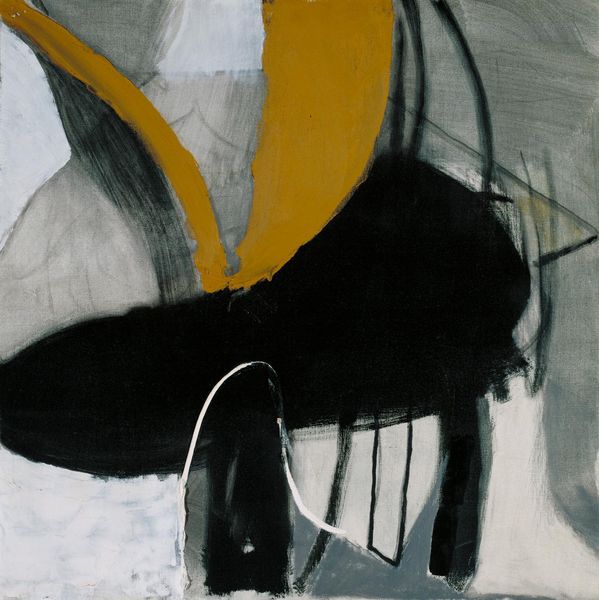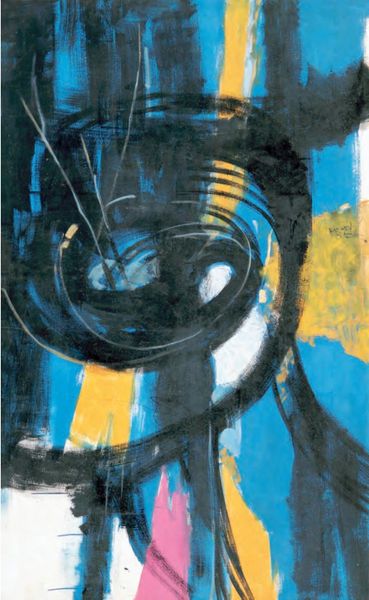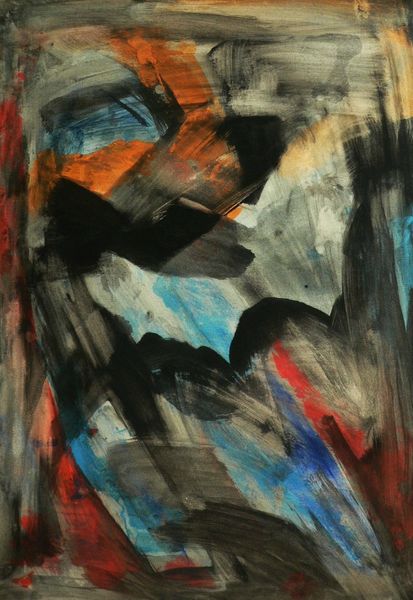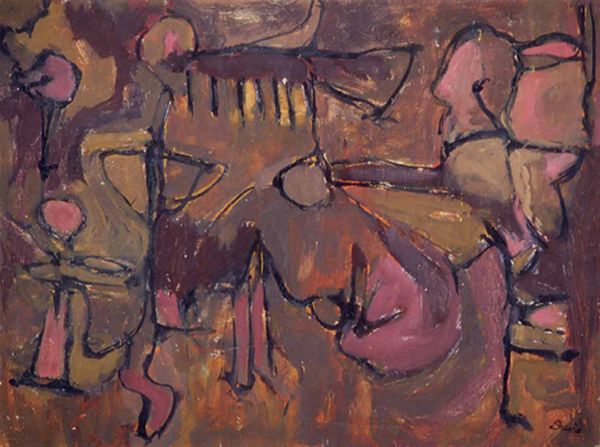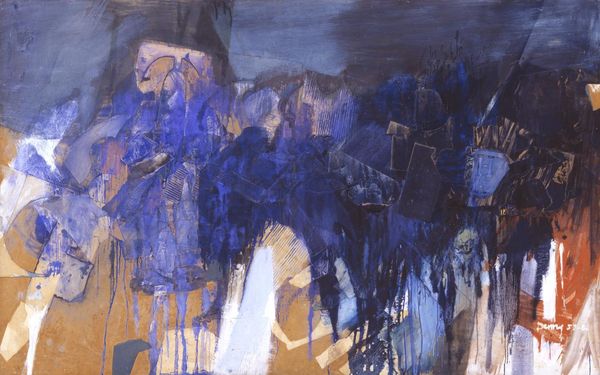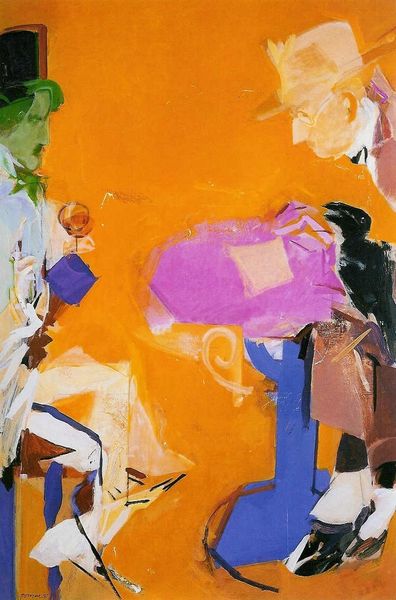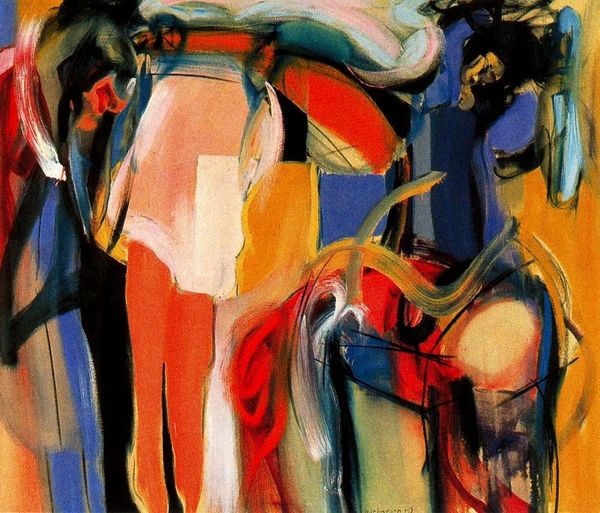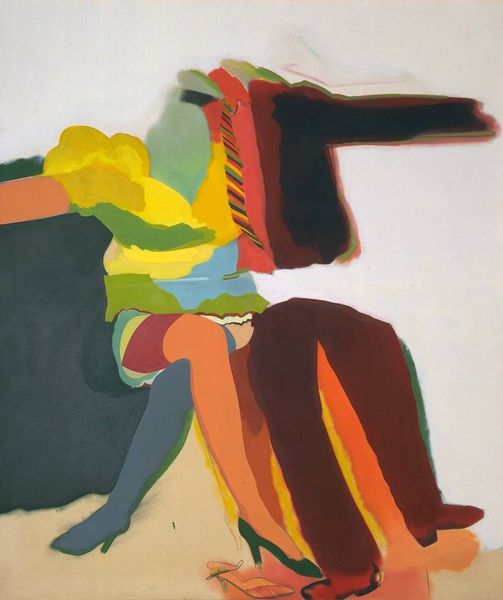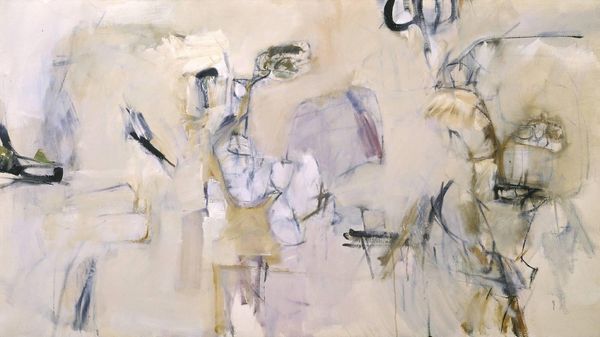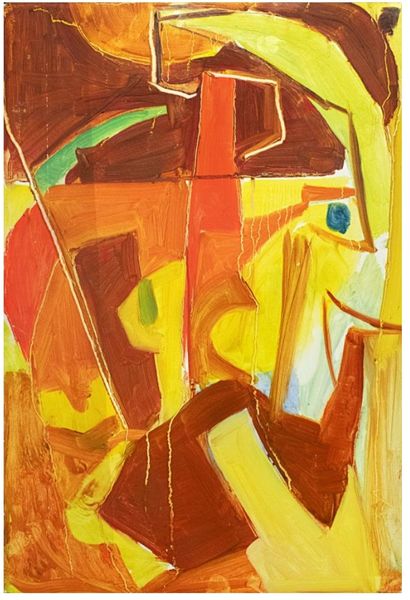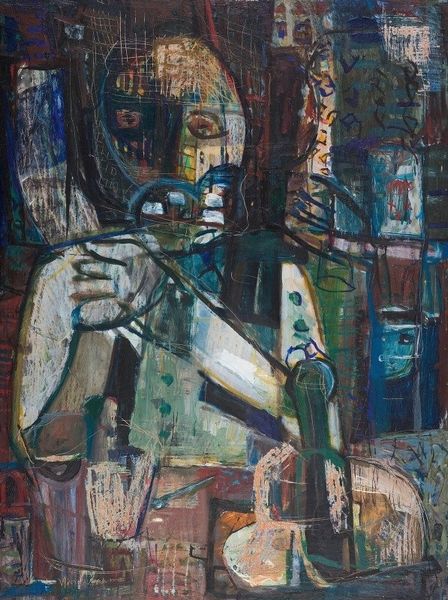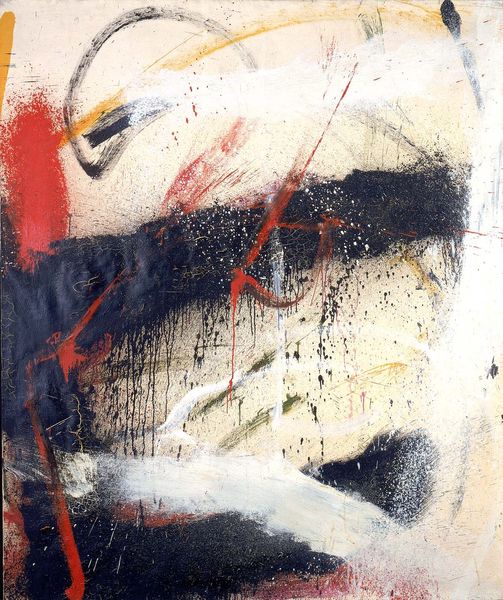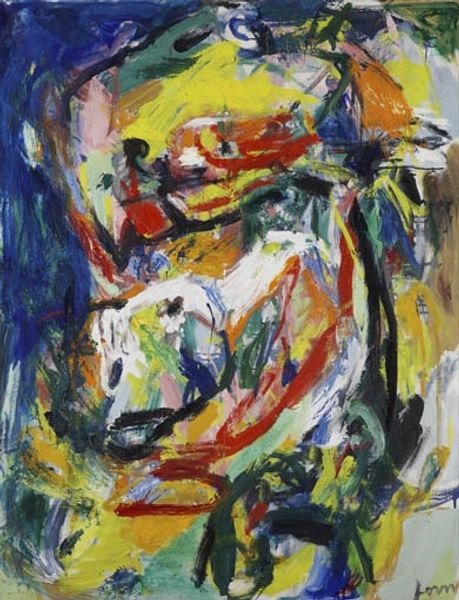
Copyright: Albert Oehlen,Fair Use
Curator: We are looking at an untitled oil on canvas painting by Albert Oehlen, created in 1989. It’s a rather large piece, dominating the wall. What are your initial impressions? Editor: Visually, it’s unsettling. There’s an overwhelming sense of ambiguity, of fragmented forms struggling to coalesce into something recognizable. A dark, looping line dominates the canvas, framing and disrupting. Curator: Oehlen, throughout his career, consciously deconstructed traditional notions of painting, pushing against the established art world's criteria. This particular work, rooted in the Neo-Expressionist movement, directly confronts the viewer with an intentional lack of clarity, mirroring perhaps the anxieties and uncertainties prevalent in the late 20th century. Editor: Those fragmented eyes…they're unsettling but arresting. Eyes have carried so much weight throughout art history. They have been seen as windows to the soul, conveyors of emotion. Here, however, they’re disembodied, almost voyeuristic. Does this reinforce Oehlen’s deconstruction of established visual tropes? Curator: Precisely. He seems to be questioning the very act of seeing, and how representation shapes our understanding of reality. The seemingly haphazard application of paint, the clashing colors... These weren't mistakes. They are a conscious disruption of traditional harmony. Think about the context of late 80s Germany; a country grappling with reunification and a rapidly changing social landscape. Editor: It speaks to a breakdown of the self, or the fragmentation of identity in an era of profound shifts. It echoes psychological concepts of a divided consciousness, particularly relevant during periods of immense societal change. And the muddy browns…those earthen tones evoke feelings of decay. Curator: And consider the masculine anxiety present during this period. The work destabilizes not only painterly convention but also dominant notions of gender, authorship and artistic mastery through irony and disruption. The Neo-Expressionist movement allowed for revisiting the loaded traditions with new possibilities. Editor: Even the composition reflects this discord. Forms hover without clear anchors, suggesting a world unmoored, directionless. I initially saw it as a chaotic jumble but now I see that chaos is very purposeful. Curator: Absolutely, it serves to disrupt and challenge the observer's sense of stability, much like how political and social structures faced many radical challenges in this historical context. It is more than just abstract form, but loaded with an ideological deconstruction. Editor: So, reflecting upon this, Oehlen compels us to actively participate in creating meaning, rather than passively receiving it. The uneasiness, in the end, might be a catalyst for understanding. Curator: Yes, in confronting its challenge, the viewer begins an inquiry of their own pre-conceived notions, of painting and societal power structures as a whole. It creates a dialogue between the observer and the observed.
Comments
No comments
Be the first to comment and join the conversation on the ultimate creative platform.
